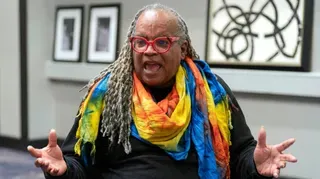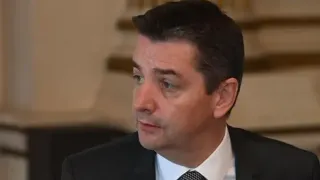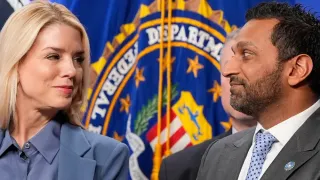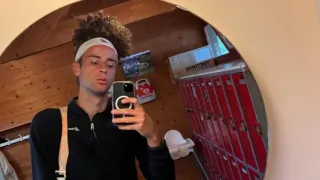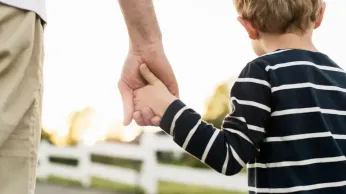
Nov 13
Chosen Family: How Gay Dads Rewrote the Blueprint for Love During the AIDS Crisis
READ TIME: 4 MIN.
When the word “family” is thrown around in LGBTQ+ circles, it’s rarely just about genealogy. For gay men who came of age in the shadow of HIV/AIDS, family was survival — a radical act of love and defiance. As the virus ripped through communities in the 1980s and ’90s, many queer men found themselves losing partners, friends, and entire social networks. Out of the ruins, they built families with whomever remained: lovers, best friends, exes, chosen siblings, and sometimes even strangers who showed up when nobody else would .
Take Peter, a travel agent in San Francisco’s Castro District, who saw his world upended when he tested HIV-positive. “From that day on, you’re always living with that in your head,” he recalled, the weight of grief and uncertainty never quite leaving him. Yet, Peter’s apartment became a refuge, a spare-bedroom sanctuary for friends and lovers keeping vigil over the dying. In the new queer order, hospitality was holy; showing up for each other was the only certainty .
The stories of gay dads during the AIDS crisis were not just about surviving — they were about rewriting the rules of kinship. Consider Ganymede and Alain, partners who bought a home in the Oakland hills in 1985, the same year they both tested positive for HIV. Their house became a haven, not just for themselves, but for a community of queer men and women drawn together by a shared fascination with the union of sex and spirituality. When Alain’s health failed, Ganymede spoon-fed him water on the day he died, embodying the kind of devotion that transcended romance or friendship — it was family, full stop .
After Alain’s death, Ganymede fell in love again with Steven, also HIV-positive. Together, they retreated from the battlefield of San Francisco, filling their home with art, books, and ferns, nurturing themselves and their memories. “We were pillars standing amidst the ruins,” Ganymede said, a phrase that echoes with the resilience queer families have shown for generations .
But the blueprint was never static. As partners died, people like Ganymede leaned harder into chosen family, forming support groups, activist circles, and Facebook communities for long-term survivors. Even in isolation, the impulse to connect, to care, to build something lasting out of loss, remained .
The AIDS crisis turned ordinary people into extraordinary caregivers. The Gay Men’s Health Crisis (GMHC) Buddy Program paired volunteers with people living with AIDS, ensuring no one faced illness alone. Sandi Feinblum, a volunteer, dropped everything when her friend Ramiro called, terrified and ashamed. He wasn’t out to his biological family, so Sandi became his family — “He was family to me,” she said, echoing the ethos of queer kinship .
Many gay dads faced the heartbreak of knowing they might leave children behind — some biological, some adopted, some “bonus kids” claimed by love rather than law. One father, Jimmy, agonized over the legacy he’d leave his son Jamie, worrying he’d set the wrong example but hoping Jamie would “become a better man than he was.” The act of parenting during a plague was fraught, but it was also fiercely hopeful — a testament to queer men’s capacity to nurture in the face of unimaginable loss .
Lesbians, trans people, and straight allies stepped up, too, often serving as caregivers, surrogate parents, or the only safe hands willing to touch and tend to the sick. Ruth Coker Burks, for example, buried more than 40 men with AIDS in her family’s cemetery, simply because nobody else would claim them .
Why revisit these stories now, when the rainbow flag flaps over city halls and queer parenting is (sometimes) a mainstream dream? Because the lessons of endurance, creativity, and chosen family are still queer gospel. Today’s LGBTQ+ families — whether led by gay dads, lesbian moms, trans parents, or nonbinary caregivers — inherit a legacy of radical kinship forged in the crucible of crisis.
Brian Rosenberg, who grew up in the era and later became a dad himself, reflected on both the trauma and the triumphs of that time. “It was a tumultuous time for gay men,” he said, noting that his own HIV status shaped how he approached love and parenting. For many, the specter of AIDS meant parenting with intention: teaching children resilience, compassion, and the importance of chosen family bonds .
Even those whose families escaped the direct grip of HIV/AIDS were shaped by the crisis. Jon, whose gay dad ran a local gay crisis line from their home, remembers the ever-present shadow of the virus: “Other kids were worried about monsters under the bed. I was worried about the phone ringing in the middle of the night.” The AIDS crisis made queer parenting an act of public service — a daily commitment to community care .
So what can today’s LGBTQ+ families learn from these gay dads and their chosen kin?
- Radical empathy: The willingness to show up for each other, no matter how messy or painful, remains the cornerstone of queer family.
- Creativity in crisis: Whether it’s turning a spare bedroom into a hospice, or starting a Facebook group for survivors, queer families thrive by adapting.
- Legacy of care: The commitment to nurture — children, partners, friends, even strangers — is what transforms hardship into hope.
And, crucially, these families remind us that “family” is never just a noun. It’s a verb, an ongoing act of creation and resistance.
As the world contends with new pandemics, renewed prejudice, and the ever-present need for queer solidarity, the blueprints drawn by gay dads during the AIDS crisis remain as relevant as ever. They are reminders that endurance is not just about surviving — it’s about loving fiercely, building boldly, and claiming kin wherever you find it.
